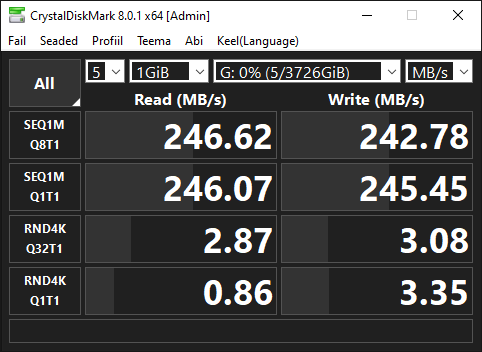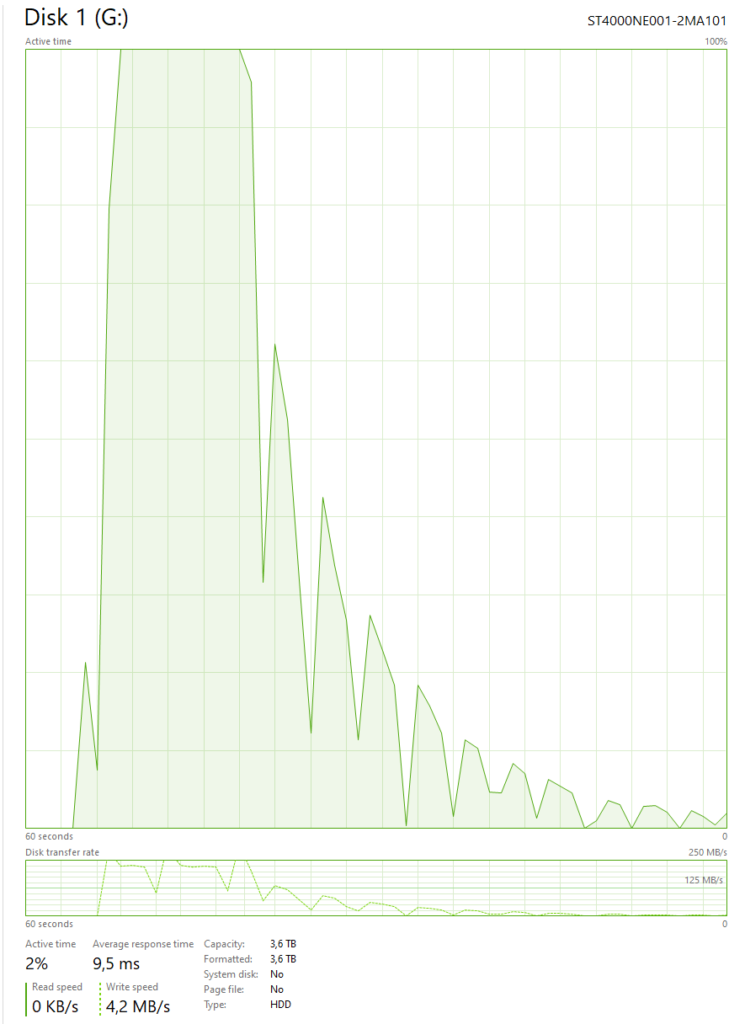Intro/Random Rant
As with many people I had moved to SSD drives a long time ago for main active storage and almost forgot about HDD’s. I kept some of my old HDD-s active for dumping data that I didn’t need to access so quickly/often. But now that my 9 years old 2TB Hitachi disk is showing signs of its death approaching (rattling sounds/SMART errors) it has finally come time to replace it.
Price check HDD vs SSD
I initially thought that SSD’s have been around long enough so their prices might be reasonable.. Oh how wrong was I. If you need ample space to store all your “password lists, strange old Linux version compilation machines and test hack test boxes”, then SSD-s are still not reasonable at all. What actually surprised me was that the “slow” SATA SSD-s are priced the same as M2 NVME drives.
A 4TB SATA SSD will set you back 300-700 EUR. So if you don’t care about spending money on data that just mostly sits around, be my guest, but at least for me it seemed a waste. So I started looking at HDD prices and they were much more reasonable. Starting from as low as 75 EUR and ranging up to ~250EUR for 4TB.
After a bit of looking around on the market for disks that seem to have “long term survivability”, a reasonable price and availability, I ended up choosing the 4TB Seagate IronWolf Pro. It cost me ~120 EUR, so not bad at all.
Performance
Yes I know it’s a NAS oriented drive and I’m currently putting it inside my “regular computer”. But as my PC is “like a server” and it’s always on doing something.. Then, the fact that the disk has a long MFTB (1,2M hours) and is rated for 24/7 work is important to me.
After having installed the drive, it actually surprised me. When Seagate’s tech spec PDF states that it’s read/write speed should be 220MB/s, it out performs it. CrystalDiskMark results say that it’s actually 246MB/s read and 242MB/s write.

Also tried measuring disk performance with the build in Windows System Assessment Tool. It showed a bit slower results on the read. Did 10 runs and this was ~the average:

Besides that, I was surprised that copying stuff there from my NVME drives was “almost instant”.. I guess Windows is doing some magic in the background with newer drives. When I copied a few VM-s from my NVME to the IronWolf 10GB “was done in a few seconds”. Tested it a couple of times “over and over again” with always the same results:

And yes I know that the data wasn’t actually written that fast to the disk that fast. But it still surprised me and was interesting to see this behavior. When looking at task manager steady data transfer could be seen even after explorer had stated that it had finished copying the files:

That did not happen when I copied the same things to one of my older WD Black HDD’s that isn’t yet dying.
Conclusion
I was sad to see that the SSD prices are still high when you need higher capacity. But I was pleasantly surprised at the read/write performance of todays HDD’s. They actually come really close to cheaper SSD drives. When you add in the price per GB/TB then I completely understand why people still build machines which have a relatively small SSD for the boot drive and a HDD larger amounts of data.